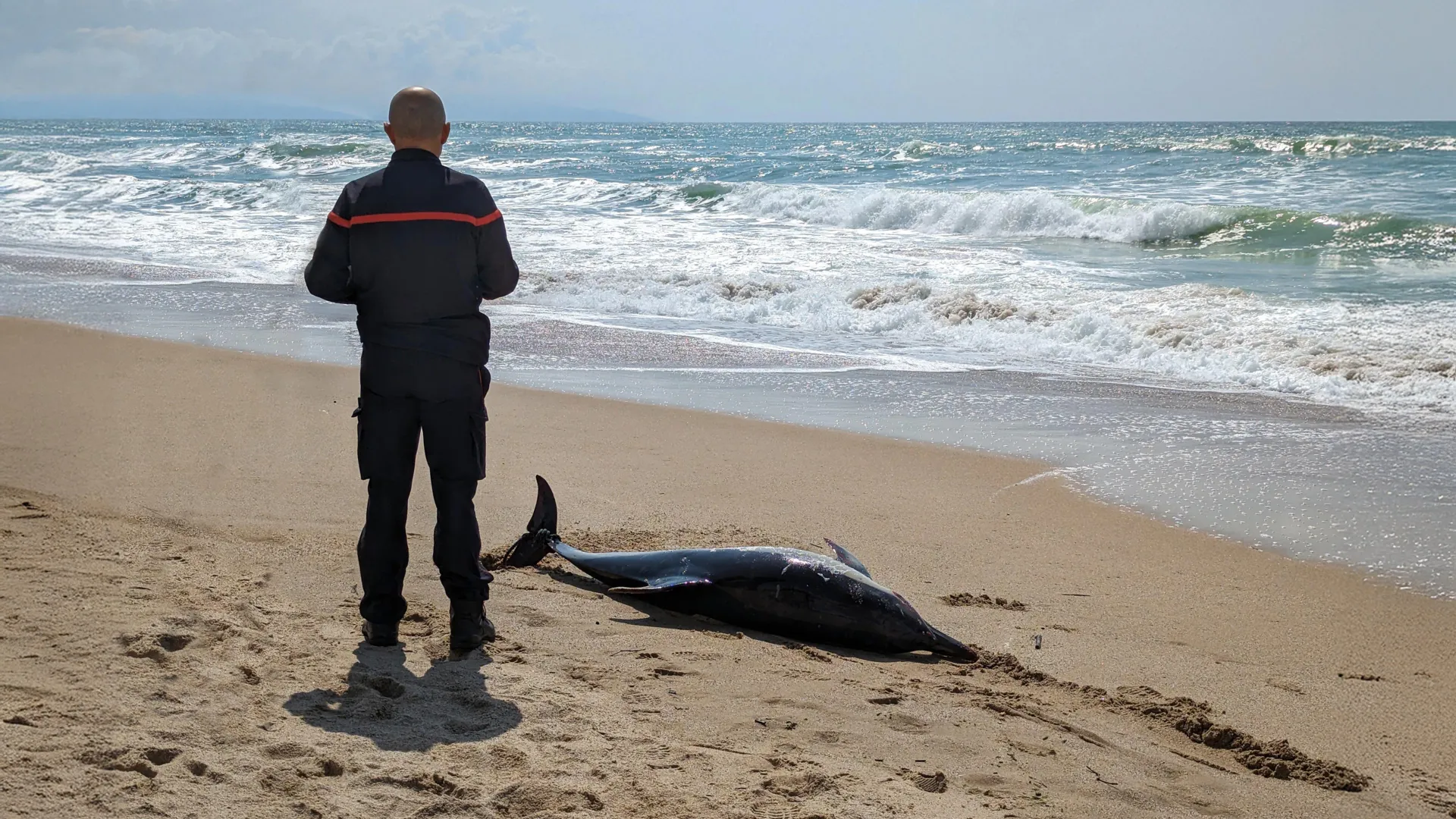Dolphins may be getting Alzheimer’s from toxic ocean blooms
- Date:
- October 11, 2025
- Source:
- Brain Chemistry Labs
- Summary:
- Dolphins washing up on Florida’s shores may be victims of the same kind of brain degeneration seen in humans with Alzheimer’s disease. Researchers discovered that cyanobacterial toxins—worsened by climate change and nutrient pollution—accumulate in marine food chains, damaging dolphin brains with misfolded proteins and Alzheimer’s-like pathology.
- Share:

For many nature enthusiasts, few scenes are as distressing as finding a stranded whale or dolphin lying helpless on the beach. When these animals are still alive, marine biologists and volunteers rush to assist, shielding them from the sun and preventing their skin from drying out by pouring seawater over them or draping them with wet towels. Others work tirelessly to guide the animal back to deeper waters once the tide returns.
Tragically, not every rescue attempt comes in time. Some dolphins and whales are discovered already dead, leaving behind a haunting mystery that has puzzled scientists for decades: what drives these intelligent creatures to beach themselves in the first place?
A team of researchers from Florida to Wyoming believes they may have uncovered a surprising explanation. They suggest that, much like humans with dementia who sometimes wander away from familiar places, dolphins might also become disoriented due to a form of Alzheimer's-like disease. Their findings point to a connection between this disorientation and long-term exposure to harmful compounds produced by cyanobacteria -- microscopic organisms that thrive in warm, nutrient-rich waters.
Research involving residents of Guam has shown that people who regularly consume foods containing cyanobacterial toxins are more likely to develop the same brain abnormalities seen in Alzheimer's disease, including misfolded tau proteins and amyloid plaques. One of the most concerning of these toxins is β-N-methylamino-L-alanine (BMAA), along with its chemical relatives 2,4-Diaminobutyric acid (2,4-DAB) and N-2-aminoethylglycine (AEG). These compounds are known to be highly toxic to nerve cells. Experiments in animals demonstrate that BMAA exposure can lead to Alzheimer's-like brain damage and cognitive decline. Once released into marine ecosystems, these toxins can build up in the food chain, eventually reaching top predators such as dolphins.
When researchers examined the brains of twenty bottlenose dolphins that had stranded along Florida's Indian River Lagoon, they found significant levels of BMAA and its related toxins, especially 2,4-DAB. Dolphins that washed ashore during peak cyanobacterial bloom periods contained up to 2,900 times more 2,4-DAB than those stranded at other times of the year. Their brains showed many of the same pathological features seen in humans with Alzheimer's disease, including β-amyloid plaques and hyperphosphorylated tau proteins. The scientists also identified TDP-43 protein inclusions, a marker associated with more aggressive forms of Alzheimer's, along with 536 genes expressed in patterns consistent with the disease.
The duration of cyanobacterial blooms is increasing with climate warming and nutrient inputs associated with agricultural runoff and sewage discharges. Cyanobacterial-laden waters have often been released down the St. Lucie River from Lake Okeechobee into the Indian River Lagoon. "Since dolphins are considered environmental sentinels for toxic exposures in marine environments," Dr. David Davis at the Miller School of Medicine explains, "there are concerns about human health issues associated with cyanobacterial blooms."
In 2024, Miami Dade County had the highest prevalence of Alzheimer's disease in the United States. "Although there are likely many paths to Alzheimer's disease, cyanobacterial exposures increasingly appear to be a risk factor," adds Dr. Davis.
"Among Guam villagers, exposure to cyanobacterial toxins appeared to trigger neurological disease," said Dr. Paul Alan Cox of the Brain Chemistry Labs in Jackson Hole.
This research was published in the current Nature journal Communication Biology by researchers at Hubbs-SeaWorld Research Institute in Melbourne Beach, Florida, The Blue World Research Institute in Cocoa, Florida, The University of Miami Miller School of Medicine, Miami, Florida, Brain Chemistry Labs, Jackson Hole, Wyoming, Rosenstiel School of Marine, Atmospheric, and Earth Science, University of Miami, Miami, Florida.
Story Source:
Materials provided by Brain Chemistry Labs. Note: Content may be edited for style and length.
Journal Reference:
- Wendy Noke Durden, Megan K. Stolen, Susanna P. Garamszegi, Sandra Anne Banack, Daniel J. Brzostowicki, Regina T. Vontell, Larry E. Brand, Paul Alan Cox, David A. Davis. Alzheimer’s disease signatures in the brain transcriptome of Estuarine Dolphins. Communications Biology, 2025; 8 (1) DOI: 10.1038/s42003-025-08796-0
Cite This Page: